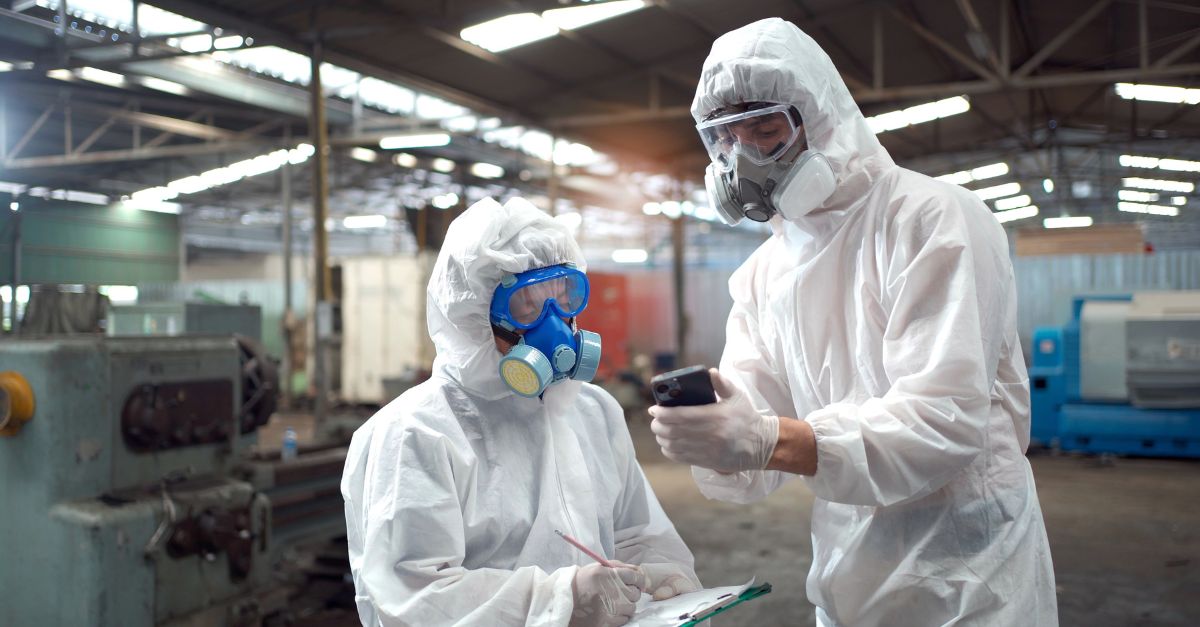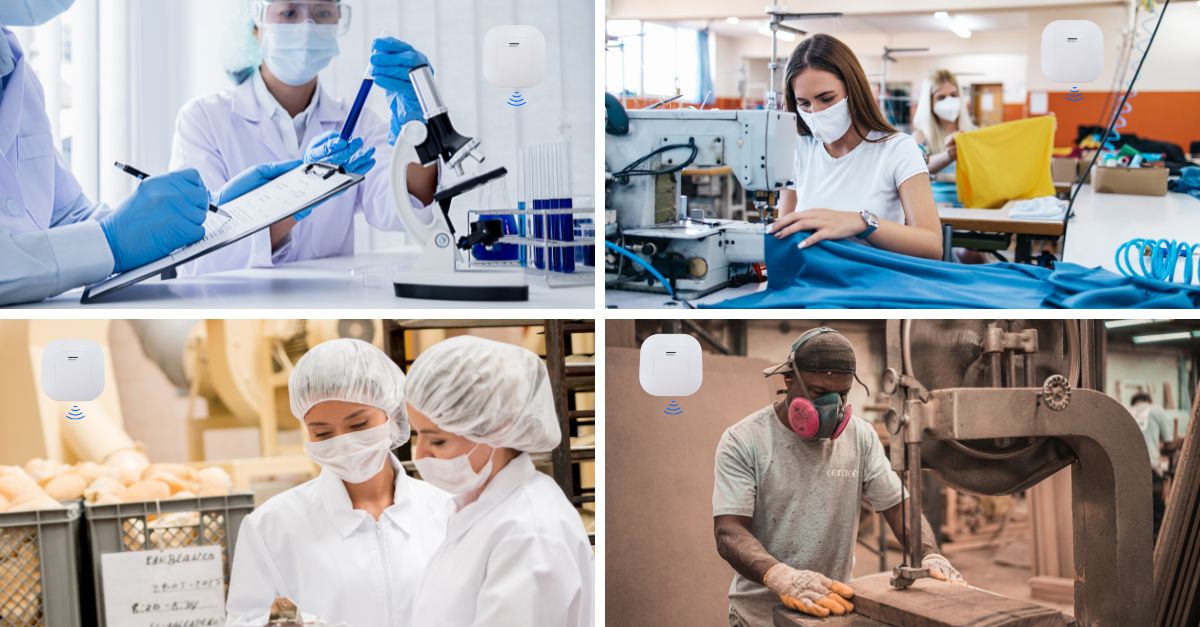There are many work environments where people are exposed to biological agents: from hospitals, laboratories and wastewater treatment plants to the textile, food processing and woodworking industries, where there is a wide range of microorganisms that pose a risk to workers’ health.
It is therefore important to know what the main biological agents are, the risks and routes of exposure, and the different prevention solutions.
What are biological agents? Main routes of exposure
According to the Occupational Safety and Health Administration (OSHA), biological agents include many micro-organisms, including viruses, bacteria and fungi, as well as genetically modified micro-organisms (human endoparasites such as protozoa and helminths) and cell cultures.
The risks associated with exposure to biological agents in the workplace can vary considerably depending on the type of agent, the work environment and specific work practices, and there are different routes of exposure.
Respiratory route
One of the main sources of risk from exposure to biological agents is the inhalation of microorganisms via the respiratory route.
The term “bioaerosol” is used to describe any particulate matter of biological origin (plant, animal or microbial) suspended in the air, and is referred to when discussing airborne biological agents and products of biological origin that enter the body via the inhalation route.
As defined by the American Conference of Governmental Industrial Hygienists (ACGIH), a bioaerosol can include pathogenic and non-pathogenic microorganisms, fragments and structures of microorganisms, and toxic and allergenic substances.
Most respiratory diseases develop through mechanisms of airway inflammation caused by specific exposures to toxins, allergens or other agents that promote the inflammatory process.
Dermal and oral routes
Direct skin contact with surfaces contaminated by micro-organisms or the ingestion of contaminated food, water or materials are also sources of exposure and, although less frequent, are also important to consider in preventive measures.

The importance of particles, humidity and temperature in the presence of biological agents in indoor environments
Biological agents are mainly spread through the air in the form of aerosols, respiratory droplets and airborne particles, which serve as their means of transport and whose risk of infection increases with the concentration in the air, the duration of exposure and the hygiene and control practices implemented.
Temperature has a direct effect on the survival and growth of micro-organisms, as well as their rate of reproduction; many pathogenic bacteria thrive at warm temperatures, which in turn promotes an increase in their rate of reproduction and transmission.
On the other hand, relative humidity affects the ability of biological agents to disperse in the form of aerosols, as bioaerosols remain stable in the air for longer under high humidity conditions, increasing the likelihood of inhalation and spread of microorganisms.
In addition, humidity is a critical factor in the growth of fungi and moulds, providing optimal conditions for their proliferation.
It is therefore clear that indoor air quality plays a crucial role in preventing the spread of biological agents.
Basic biological agent prevention measures
A good measure to control exposure to these agents – in addition, of course, to the use of appropriate personal protective equipment (PPE) – is to measure indoor air quality as an indicator of the risk of infection, with particular attention to monitoring particulate matter, temperature and humidity.
Regular monitoring of air quality is essential to assess and mitigate biohazards in the workplace.
Not only does it help to identify when the working environment is at higher risk of exposure to biological agents due to the right conditions of temperature, relative humidity and particulate matter concentration, but it also helps to define ventilation strategies that favour the efficient removal of microorganisms.
In this respect, Indoor Air Quality devices such as Nanoenvi IAQ allow the detection and warning by means of alarms of the risk conditions of exposure to biological agents in a light and compact device that is easy to use and does not require installation.

It also has a data visualisation platform that allows personalised alerts to be generated if any of the parameters exceed the pre-set threshold, so that appropriate action can be taken.
In conclusion, the use of indoor air quality monitors is an effective tool for controlling exposure to biological agents in the workplace.










